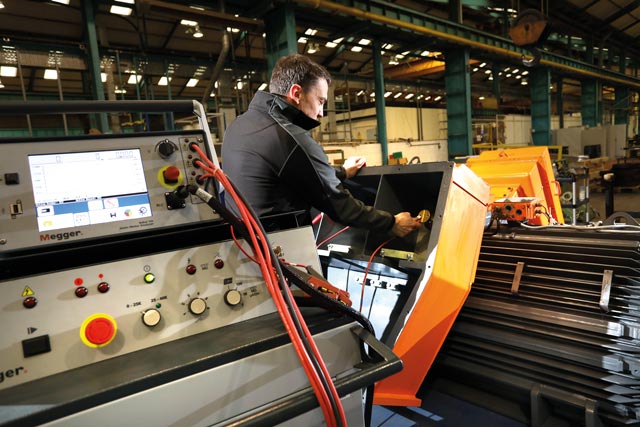

A suitable testing regime can detect insulation degradation, the second most common cause of motor failure, says Houghton International EMS sales representative Mark Convery.
Around 30% of electric motor failures are a result of electrical insulation breakdown, the second biggest cause of failure after bearing issues. Time, use, moisture and other contaminants inevitably cause insulation to deteriorate. It is therefore important to identify and predict early signs of insulation degradation for a clear picture of motor condition, reducing the risk of unplanned downtime and catastrophic failure.
The electrical testing regime detailed in this article can find early indications of insulation weakness and faults in windings, between phases or coils, and in ground wall insulation. They can also detect problems with connections such as feed cable insulation weakness, motor imbalance, and open or high resistance.
Houghton International begins a testing routine by checking the balance between the motor’s phases using a phase resistance test. Readings for each phase are compared to identify any anomalies that may indicate problems. High resistance in a phase may be a sign of bad electrical joints or breakage within the coil or copper.
In order to check suitability to carry out high voltage testing, insulation resistance (IR) and polarisation index (PI) are then tested. These two tests provide a good indicator of the strength of the external (coil-to-earth) insulation of the windings. The IR reading is taken after applying the test voltage for one minute. A second reading is taken at 10 minutes, then divided by the first reading to calculate the PI.
A PI of below 2 would be considered a fail. This may be a sign of a fault in the coil-to-earth insulation or the presence of moisture or contamination, requiring further investigation.
If the IR and PI results are satisfactory, a high potential test is then performed. Tests carried out at operating voltage may not detect smaller instances of insulation deterioration, so the high potential test uses a higher voltage to stress the insulation and detect such smaller dielectric breakdowns.
Insulation breakdown may occur not only in the external insulation, but also between turns (the individual strands of copper) in the motor windings. All coils should be nearly identical, so surge test readings from a coil or phase can be compared to identify indications of breakdowns in turn-to-turn insulation, dry joints or incorrect winding connections.
Partial discharge
High voltage motors can exhibit high levels of partial discharge (PD), where localised corona discharge causes deterioration, eventually leading to insulation breakdown. This is not detected by standard diagnostic tests, so it is possible for a motor to appear healthy despite high levels of corona discharge. PD testing identifies these localised weak and aged points of the insulation.
Electrical testing can be carried out in situ, making the process relatively quick and easy with minimal disruption. It can be carried out as a one-off assessment, but we recommended testing at regular intervals to provide a trending measure of dielectric integrity and build a more complete picture of machine condition. For instance, high levels of PD might be present in a motor, but if the levels remain consistent without worsening over time they might not affect the operation of the motor.
This is why results require interpretation, and experienced electric motor repair engineers can draw on their knowledge of a wide range of machinery to interpret tests and provide recommendations on required maintenance and repairs. Visual checks are key and can be just as illuminating as advanced electrical testing when you know what you’re looking for.
The most advanced equipment on the market is only as good as those who operate it, so it is essential to understand what you are looking for to fully benefit from the insights of electrical testing. However, with the right knowledge and equipment, electrical testing provides a valuable picture of motor condition to inform operational, maintenance and capex decisions.
Web: www.houghton-international.com/
Email: info@houghton-international.com
Phone: (+44) 0191 234 3000

